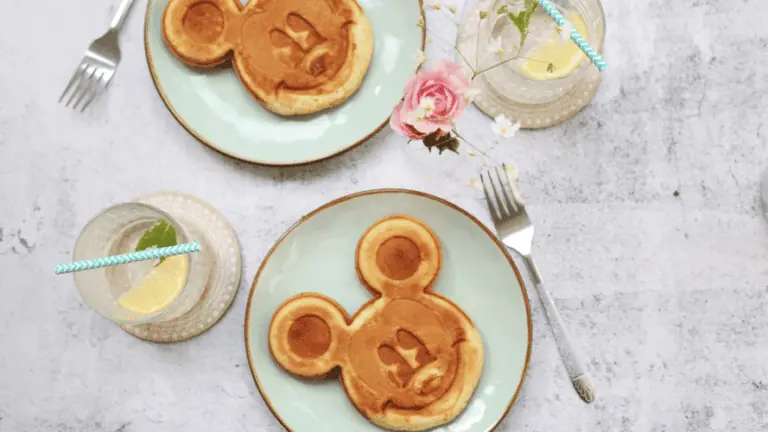Sensory analysts assess the various characteristics of food in order to evaluate both new products which are being tested for the market, and established products as part of product development and quality control.
The food industry depends heavily on sensory analysts, whether they are developing a new product, trying to decide whether a taint from chemical contamination has affected a product, establishing how long a shelf life is appropriate or maintaining quality control. It is the job of sensory analysts to make sure, using their various senses, that the products are tested scientifically and with as much objectivity as is possible.
Sensory tests which are used to assess products include triangle tests, paired comparison tests, and ranking tests.
- Triangle tests provide the sensory analyst with three coded samples, two of which are the same and one of which is different. The sensory analyst will need to identify which sample is different.
- As the name suggests, paired comparison tests present sensory analysts with a pair of coded samples and this is one of the most popular methods of presenting samples for comparative judgement.
- Ranking tests see sensory analysts working with at least three coded samples. They will usually be looking for a particular characteristic and the testers will need to rank the samples with regards to intensity of that particular attribute. This test is often used to assess which products are the best and therefore the most suitable for further testing by consumers. For example, if a manufacturer of a curry sauce is launching a new Vindaloo sauce, three or four samples may be produced which have different levels of a particular spice in them. The sensory analysts will need to assess which sample contains the optimum amount of spice. The manufacturer of the curry sauce will then use these results to decide how much spice to add to the final product.
- Other tasks carried out by sensory analysts on a regular basis include difference tests, product profiling, and rating tests.
Sensory analysts will also work closely with products to assess their shelf-life. Changes which may occur during storage affect the quality of the product over time and eventually determine the particular shelf-life. Negative changes in appearance, odour, and taste can occur if products are stored for too long and sensory analysts will work to assess when exactly these changes occur. This will help manufacturers ensure that their products retain their quality throughout the required shelf-life.
Salary
Most sensory analysts only work a few hours per day and receive an hourly rate. The average hourly wage is approximately £10 but this may differ depending upon the nature and location of the employer. There are occasional perks to the job, including being able to take home tasty leftovers.
Responsibilities
The typical tasks undertaken by sensory analysts include:
- Participating in group discussions to establish an acceptable vocabulary of terms for assessing particular characteristics. This will often involve tasting apparently unrelated foodstuffs. If, for instance, a chocolate sample leaves a nutty aftertaste in the mouth, different types of nuts would be tasted to narrow down the precise aftertaste.
- Scoring products on line scales using a computer
- Tasting a product to compare it to similar products made by competitors
- Assessing changes in products over time to establish optimum shelf-life
- Assessing flavour changes in the mouth (time intensity) since certain flavours can take time to develop
- Assessing mouth feel (for instance astringency)
- Assessing appearance (both positive such as the sheen on a piece of chocolate and negative such as “bloom” on chocolate).
- Assessing odour (both positive such as a caramel aroma and negative such as rancidity)
- Assessing texture, in which case the substance may not need to be swallowed but may be spat out into a spittoon instead. Coloured lights are often used in the booths so that analysts cannot see what they are tasting
- Assessing taste by moving the product around the mouth (there are different taste buds in different parts of the mouth which distinguish the various tastes such as sweet, sour and bitter
- Assessing aftertaste (again both positive and negative)
- Attending presentations of results
Qualifications
An interest in food and drink is obviously desirable but no formal qualifications are necessary to become a sensory analyst. The most important part of the job is having a sensitive palate and the ability to concentrate on the given task, despite the fact that the palate may be tiring. People with food allergies and intolerances are obviously not suitable for the job. A basic knowledge of scientific protocol can be useful, as can the ability to put unusual attributes into words when establishing a vocabulary.
Skills
Sensory analysts will need to possess the following skills:
- A sensitive palate
- The ability to pay close attention to detail
- Good communication skills
- The ability to concentrate for a long period of time
- Enthusiasm
- A strong stomach
- Patience
- Objectivity
Working Conditions
The round the table discussions which sensory analysts participate in are normally carried out in a room set aside for the purpose. The actual assessment of the product is carried out in individual booths in a laboratory set-up. As the products often have to be kept at a consistently cool temperature, the booths can often be somewhat chilly. Theoretically, there should be no danger associated with the job, although sensory analysts have been known to experience the occasional unpleasant side-effect from some of the products.
Sensory analysts do not need to wear a specific uniform or protective clothing but they will need to avoid perfumes and perfumed products, since this confuses the nose and interferes with the sensory process. Eating a curry the night before can leave the taste of garlic in the mouth, which would also have an adverse effect on the palate’s efficiency, so this should be avoided.
Sensory analysts are unlikely to work more than a few hours per day because the palate tires easily. Between assessments, water and cream crackers are used to cleanse the palate. This job is fairly sociable because there are normally reasonable breaks between sessions to allow the palate to recover. Evening and weekend work would be highly unusual.
Experience
The majority of us take part in basic sensory evaluation without even realising it, every time we eat something. If you are the sort of person who takes careful note of a food’s appearance, odour, and texture, rather than just wolfing it down, you could find that you would make a good sensory analyst. However, no formal experience is necessary to apply for the job, although you might like to talk to somebody currently doing the job to find out a bit more about it.
Employers
Major employers include:
- Food Research Establishments
- Supermarket Chains
- Manufacturers, such as Godiva and Walkers Crisps
Career Progression
Because of the limited hours involved with being a sensory analyst, the job does tend to appeal to people with family responsibilities who are not able to take on full-time employment and are not interested at that point in their lives in career progression.
Some sensory analysts, however, decide to adopt a role in the kitchen. They will be responsible for preparing the food tasted by sensory analysts and clearing up afterwards.
Because there can be several different panels working at different times they will have the scope to work longer hours. Some people who have come into the sensory industry because of their general scientific background take on jobs as laboratory technicians or food technologists.
Also known as…
- Food Tasters
Related Jobs
- Wine Taster
- Food Critic
- Head Chef
- Restaurant Manager
What’s it really like?
Caroline was a sensory analyst for ten years at a leading food research establishment.
She had previously worked as an Inspector of Taxes but found it difficult juggling a demanding job with her family commitments and, when she learnt from a friend that there was a vacancy in the sensory field, she applied for the position. She participated in an afternoon of tests to check that her palate was up to the job and then underwent a period of training to familiarise her with what was required. She worked two mornings per week with three hours normally being the maximum worked at any one time. It may not seem a lot but the palate tires easily and is at its best in the morning.
She was part of a panel of about twelve to fifteen tasters. In a typical morning, Caroline would take part in round-the-table discussions, trying to thrash out a set of agreed vocabulary to describe the various attributes of the product being tasted. This would include visual characteristics, mouth feel, odour, taste, and aftertaste. Tests of various natures would then be carried out in individual booths using a line-scale on a computer to score the product.
Caroline found that people used to be envious of her job, thinking that it was all about eating tasty food and just saying whether you liked it or not. This is actually the domain of consumer testing and although there were occasional tastings of nice things like chocolate, it was far more usual to taste things like spoonfuls of low fat spread. Despite the urban myths, she was never asked to taste pet food! She enjoyed the flexibility of the job and the companionship of her fellow panellists. The only negative part of her job was tasting unpleasant foodstuff, particularly when testing for taint problems. Anything that comes into close contact with food such as packaging, factory conveyor belts or flooring has the potential to cause a taint and this can often lead to expensive disputes with consumers. Analysing food with an off-flavour or odour of plastic, petrol or other such unexpected factors was therefore commonplace. One of the highlights of her time as a sensory analyst was being filmed for a television programme on food irradiation. Caroline left the job when her children were older and she was able to devote more time to working. She is now a co-ordinating editor at Fubra.
Caroline would advise anyone considering applying for a position as a sensory analyst to make sure that they have a strong stomach. Being faced with having to eat curry sauce at 9am is not for everyone! If you are the sort of person who cannot leave home without a strong cup of coffee, you will have to learn to do without as this interferes with the sensory processes. Caroline also said that it is not the sort of job selection process which candidates can prepare themselves for: either your palate is suitable or it is not. Women generally have far more sensitive palates than men and younger people are generally better than older people.








